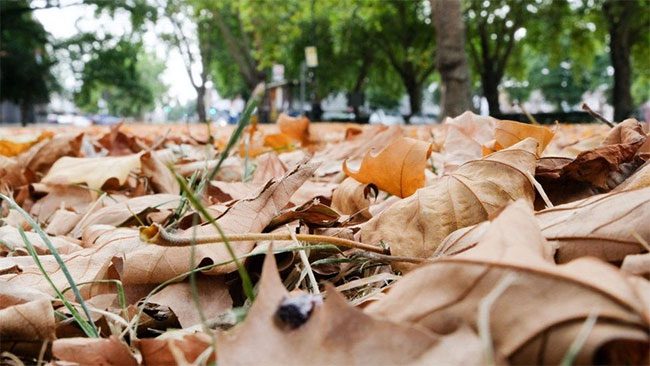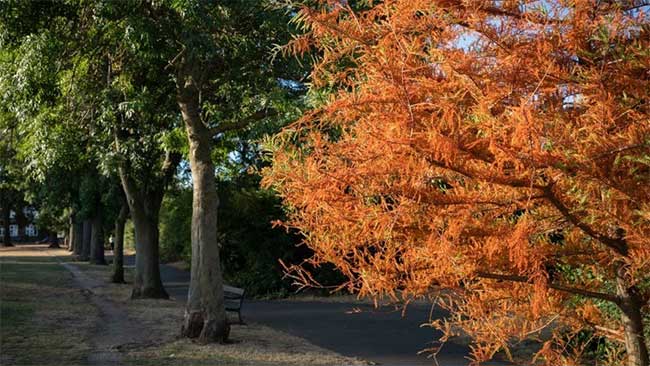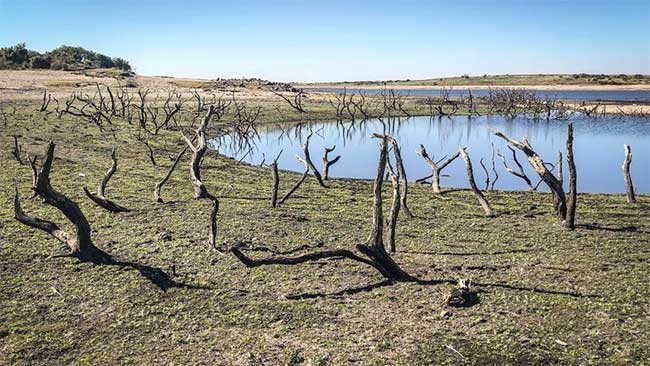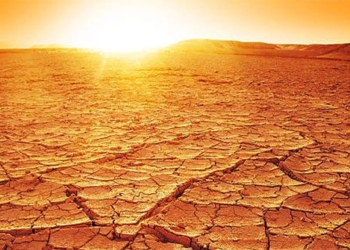On the streets of England, the sound of dry leaves crunching underfoot and the vibrant red canopies may lead many to believe that autumn has arrived early.
However, experts suggest that this change is unusual. The hot weather, severe drought, and significant water shortages in England are pushing vegetation into survival mode.
The harsh conditions are causing trees to become “stressed”, resulting in leaf drop or color changes. Concerns have been raised that some trees may die due to insufficient water, according to the BBC.
“Yellowing leaves and early leaf drop are signs that trees are stressed and are gradually shutting down,” said Leigh Hunt, a senior horticultural advisor at the Royal Horticultural Society.
Throughout the summer, England faced record low rainfall and temperatures exceeding 40 degrees Celsius. This has led to numerous wildfires, droughts, and watering bans, adversely affecting nature.

Leaves falling in London. (Photo: BBC).
Trees in Distress
“They look as if we are already in autumn. But the daylight hours are too long for the natural autumn to begin. Physiologically, plants are not responding to actual autumn conditions, which is why we call this a false autumn,” Mr. Hunt stated.
The damage to trees in rural areas of England is among the worst Mr. Hunt has witnessed in his 45 years of experience.
Mature trees can withstand drought through deep and extensive root systems. However, younger trees, especially those planted in nutrient-poor soil along roadsides, will wither and die.
Those trees that only lose a few yellow leaves can recover if adequate rainfall occurs. However, when trees cannot absorb enough water lost through transpiration in their leaves, they will struggle to bounce back.
To cope with such harsh conditions, trees may respond by producing more seeds to ensure future survival.

Dead trees in a London park. (Photo: BBC).
“If there is more rain, we might even witness a ‘second spring’ with many young trees growing,” Mr. Hunt noted.
The effects of the weather are also evident in various berries. Woodland Trust, an organization that records seasonal changes, has reported the earliest ripening of raspberries ever.
“Fruits and seeds are ripening faster than ever before. This could spell disaster for wildlife. The record heat that England has just experienced has brought some early autumn events,” said Fritha West, a researcher at Woodland Trust.
“We have also recorded the earliest ripening of blackberries in southern England. Hawthorn and sweet chestnut are also ripening early in some areas, where early leaf color change has also been noted. Both extreme temperatures and water shortages can cause trees to shed leaves sooner than we expect,” she added.
Impact on Ecosystems
It is difficult to predict the long-term consequences of drought. Ecologists believe that the parched grasslands and hard, rocky soil in much of southern England will significantly impact wildlife.
The impact of drought on surrounding areas and rivers may last for several years to come.
During heatwaves, algae grow faster than usual, posing a serious threat to vegetation in wetlands. They flourish on the water’s surface, preventing sunlight from reaching below.

Tree roots exposed due to low water levels at Colliford Lake. (Photo: BBC).
Low river levels reduce habitats for fish, amphibians, and invertebrates. This will severely affect the entire ecosystem.
“These plant species provide vital habitats for insects and fish. The disappearance of them from the ecosystem will cause significant changes in the food chain,”
said Mike Bowes, a doctor at the UK Centre for Ecology and Hydrology.
“It may take several years for vegetation to recover in rivers affected by drought,” he asserted.




















































